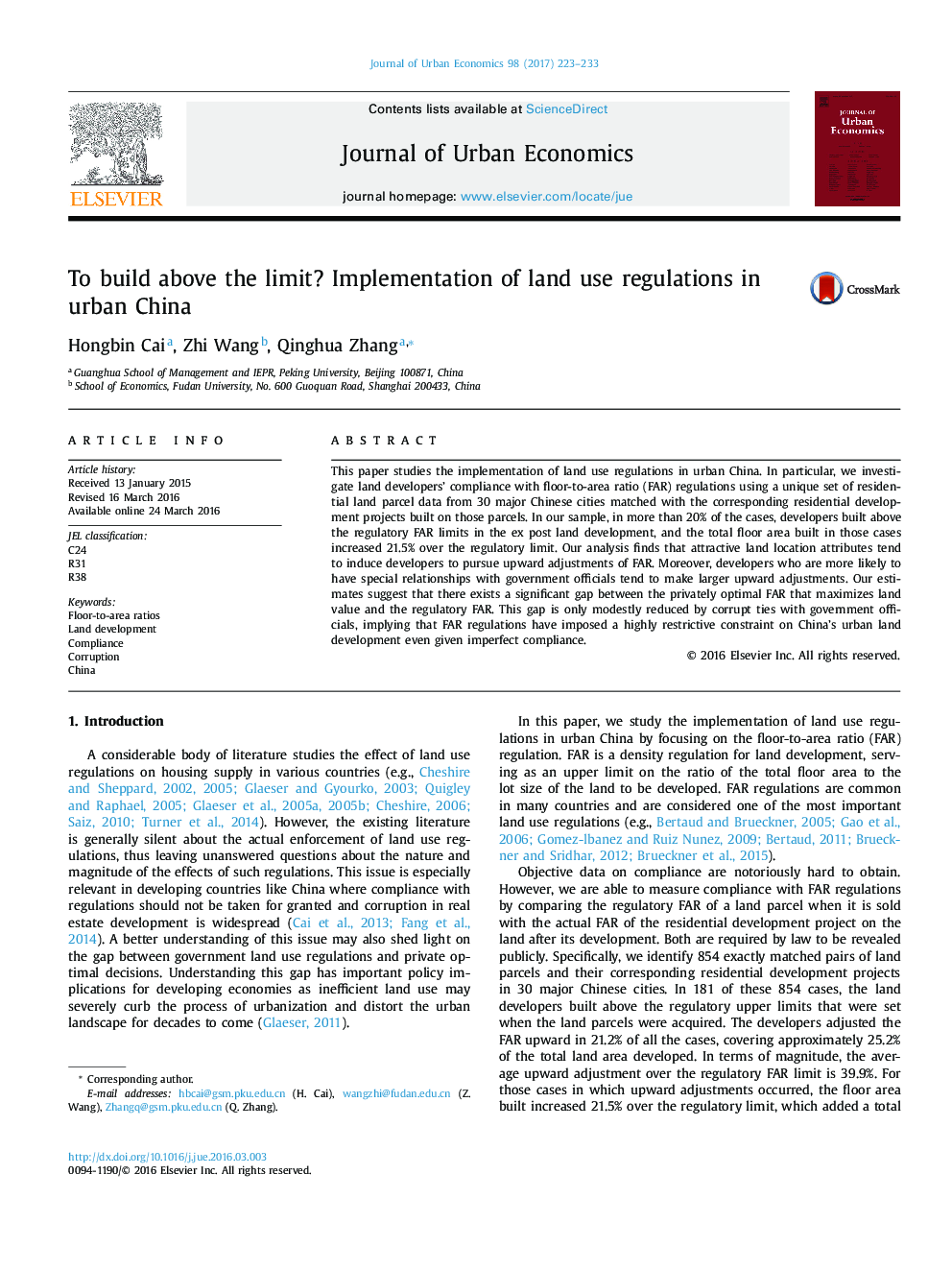| Article ID | Journal | Published Year | Pages | File Type |
|---|---|---|---|---|
| 5101960 | Journal of Urban Economics | 2017 | 11 Pages |
Abstract
This paper studies the implementation of land use regulations in urban China. In particular, we investigate land developers' compliance with floor-to-area ratio (FAR) regulations using a unique set of residential land parcel data from 30 major Chinese cities matched with the corresponding residential development projects built on those parcels. In our sample, in more than 20% of the cases, developers built above the regulatory FAR limits in the ex post land development, and the total floor area built in those cases increased 21.5% over the regulatory limit. Our analysis finds that attractive land location attributes tend to induce developers to pursue upward adjustments of FAR. Moreover, developers who are more likely to have special relationships with government officials tend to make larger upward adjustments. Our estimates suggest that there exists a significant gap between the privately optimal FAR that maximizes land value and the regulatory FAR. This gap is only modestly reduced by corrupt ties with government officials, implying that FAR regulations have imposed a highly restrictive constraint on China's urban land development even given imperfect compliance.
Related Topics
Social Sciences and Humanities
Economics, Econometrics and Finance
Economics and Econometrics
Authors
Hongbin Cai, Zhi Wang, Qinghua Zhang,
